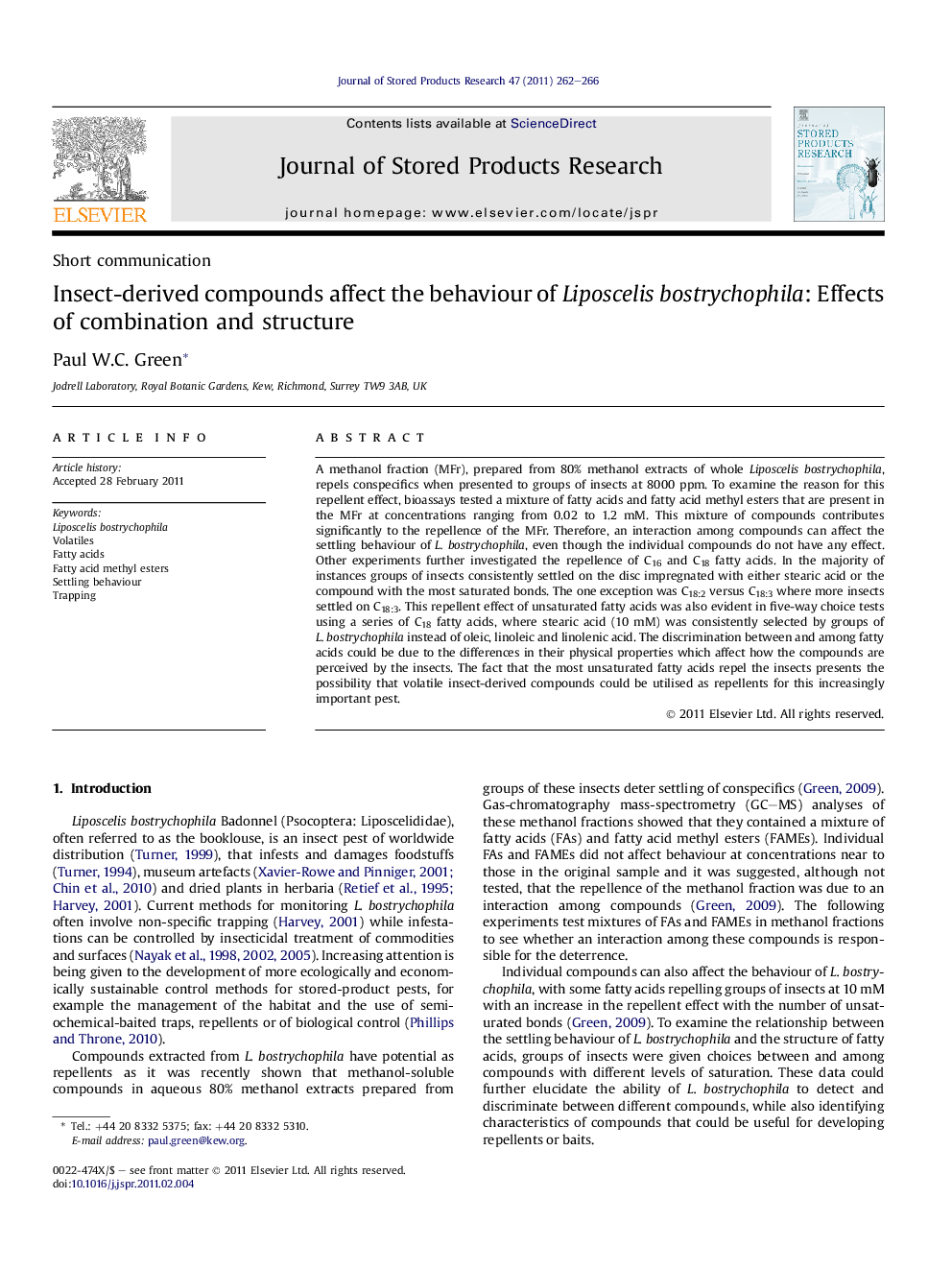| Article ID | Journal | Published Year | Pages | File Type |
|---|---|---|---|---|
| 4517217 | Journal of Stored Products Research | 2011 | 5 Pages |
A methanol fraction (MFr), prepared from 80% methanol extracts of whole Liposcelis bostrychophila, repels conspecifics when presented to groups of insects at 8000 ppm. To examine the reason for this repellent effect, bioassays tested a mixture of fatty acids and fatty acid methyl esters that are present in the MFr at concentrations ranging from 0.02 to 1.2 mM. This mixture of compounds contributes significantly to the repellence of the MFr. Therefore, an interaction among compounds can affect the settling behaviour of L. bostrychophila, even though the individual compounds do not have any effect. Other experiments further investigated the repellence of C16 and C18 fatty acids. In the majority of instances groups of insects consistently settled on the disc impregnated with either stearic acid or the compound with the most saturated bonds. The one exception was C18:2 versus C18:3 where more insects settled on C18:3. This repellent effect of unsaturated fatty acids was also evident in five-way choice tests using a series of C18 fatty acids, where stearic acid (10 mM) was consistently selected by groups of L. bostrychophila instead of oleic, linoleic and linolenic acid. The discrimination between and among fatty acids could be due to the differences in their physical properties which affect how the compounds are perceived by the insects. The fact that the most unsaturated fatty acids repel the insects presents the possibility that volatile insect-derived compounds could be utilised as repellents for this increasingly important pest.
► Methanol soluble compounds derived from 80% methanol (aq.) extracts of L. bostrychophila deter settling of conspecifics. ► A mixture of fatty acids (FAs) and fatty acid methyl esters (FAMEs) contributes to the repellent effect of the methanol-soluble compounds. ► L. bostrychophila can discriminate between C16 and C18 fatty acids with different levels of unsaturation. ► The more unsaturated a fatty acid, the more repellent it is to groups of L. bostrychophila.
